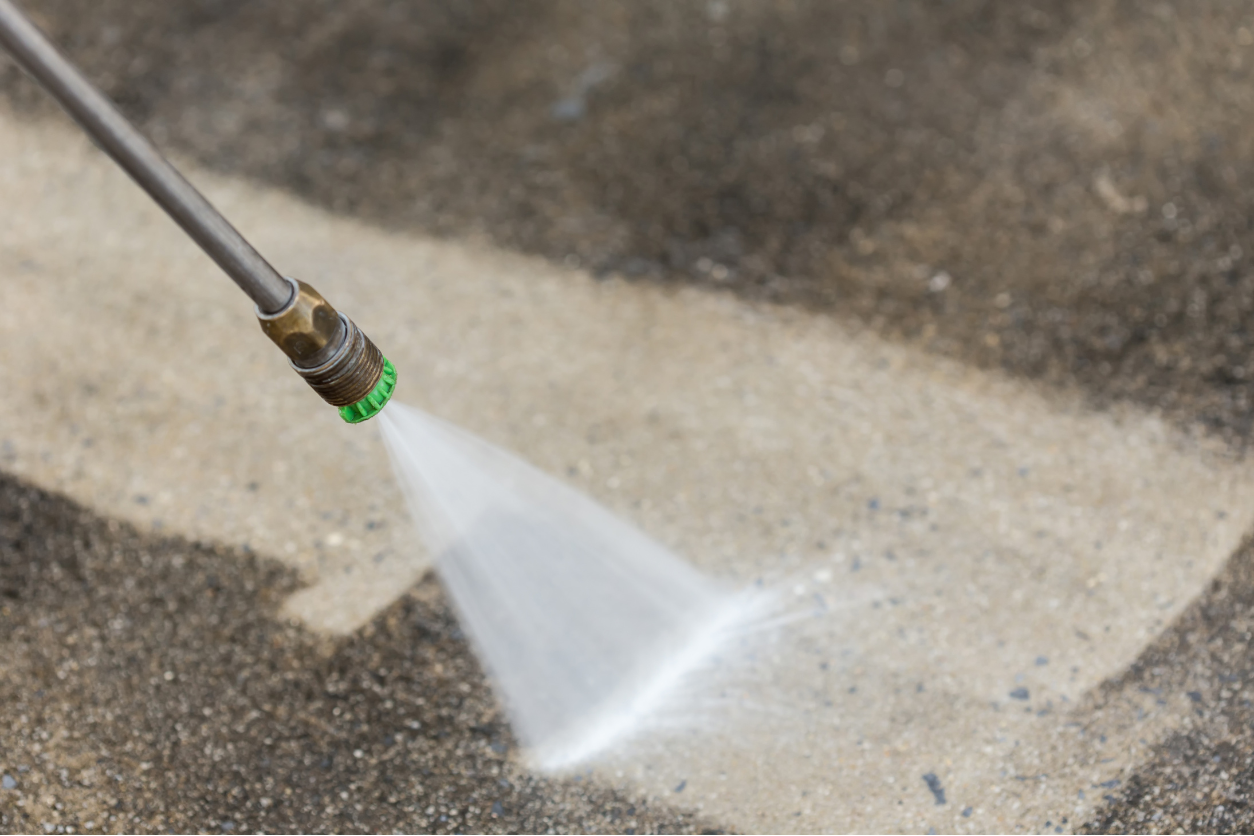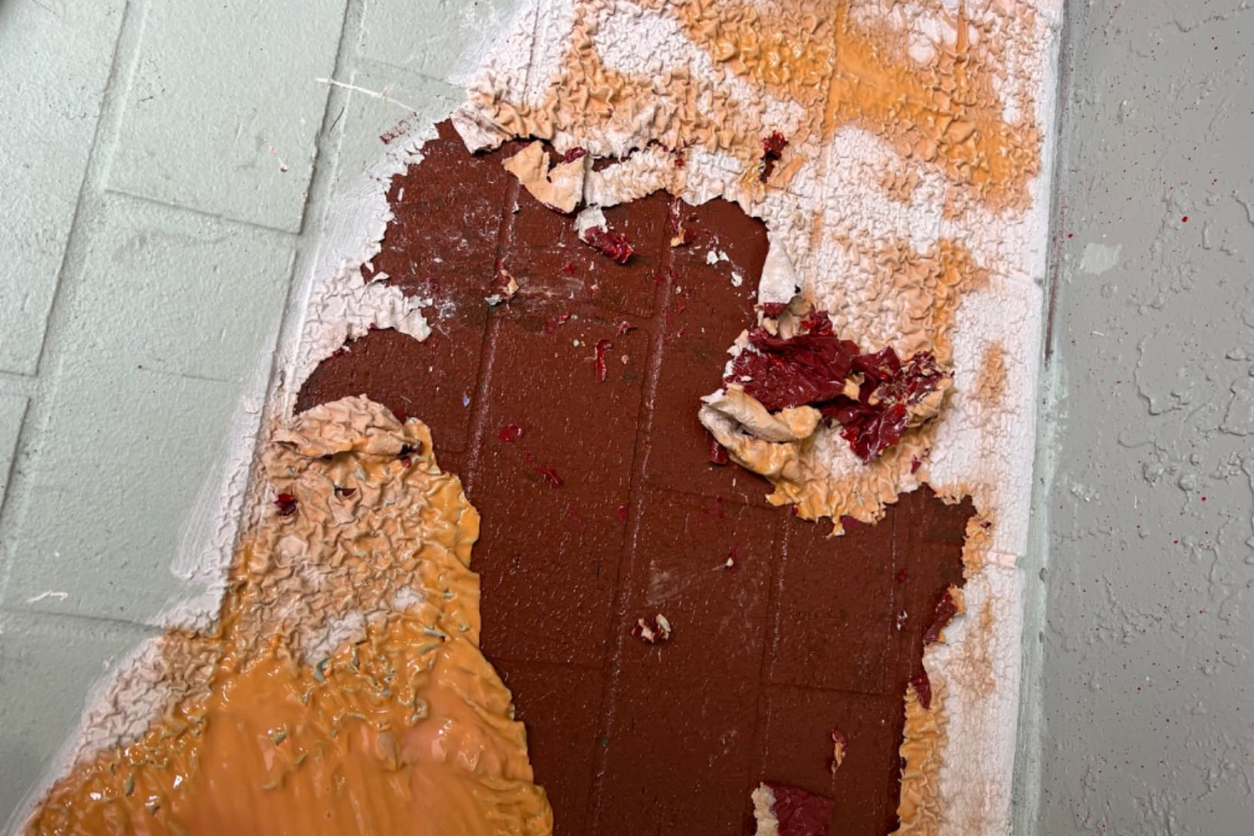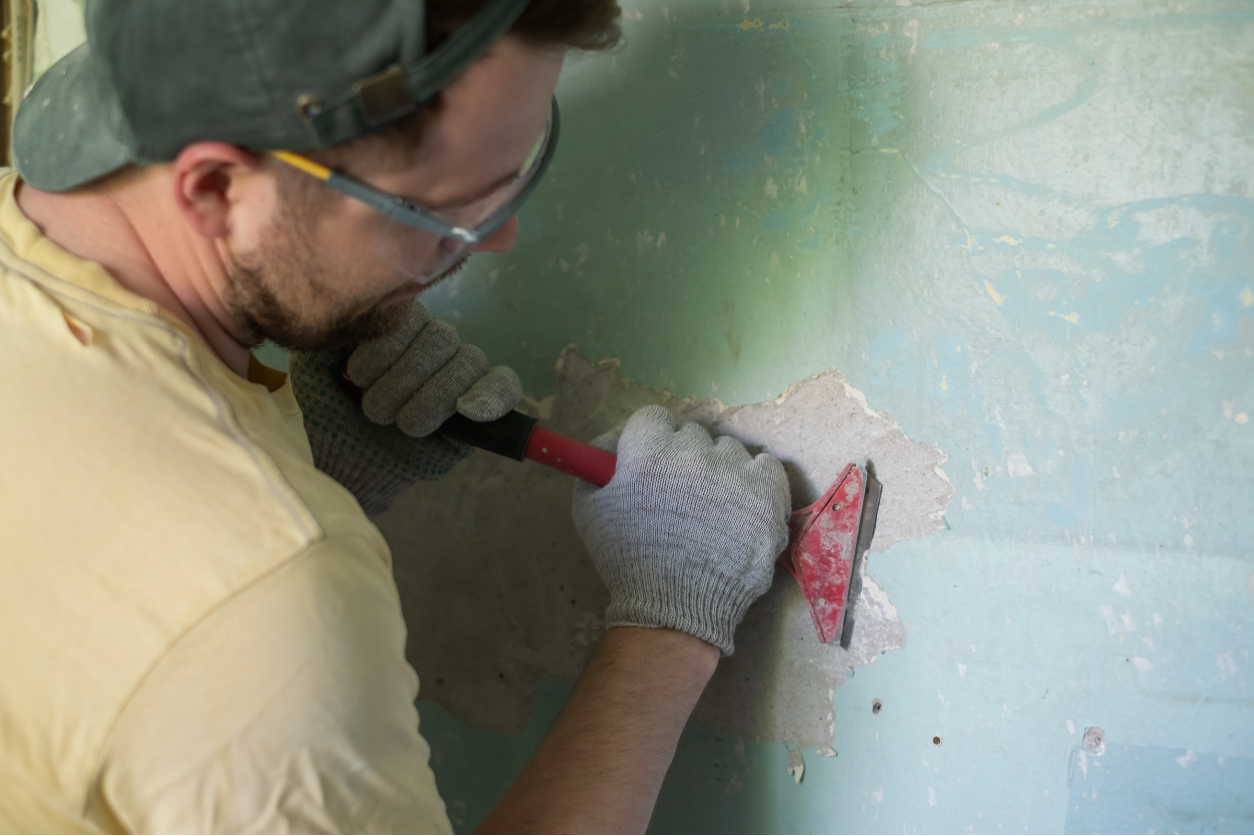How to Remove Paint From Concrete

When you realize you’ve got paint stains all over your concrete driveway or patio, it can feel like an uphill battle trying to get rid of them. Concrete’s porous nature makes it tough to get paint off completely, but don’t worry, it’s possible. Whether the paint’s been there for years or you’re dealing with a fresh spill, knowing how to remove paint from concrete in the most effective way can save you a lot of time and effort.
Different situations call for different techniques, and your approach will depend on factors like the size of the area, the type of paint, and how deeply it’s set into the concrete. Let’s break down the best methods for paint removal and how to handle each situation without tearing up your concrete.
Pressure Washing
Area Covered: Large outdoor spaces like driveways, patios, and sidewalks
Time to Complete: 1-3 hours, depending on the size of the area and how stubborn the paint is
Effectiveness: Pressure washing works best when there’s already some peeling. Just be sure to work slowly to avoid damaging the surface

When dealing with large concrete surfaces like patios or driveways, pressure washing can be an efficient way to blast away paint. It’s quick, powerful, and gets into the porous surface of concrete to lift out paint. Use a pressure washer with at least 3,000 PSI, which is strong enough to remove paint but not so powerful that it damages the concrete. If you’re working on a large area, make sure you have a steady water source nearby and enough hose length to cover the entire area.
Start by wetting the surface. Hold the nozzle a few feet away and slowly move closer, keeping the pressure even. Once you’ve loosened the paint, focus on more stubborn areas by moving in a back-and-forth motion.
Chemical Paint Strippers
Sometimes, pressure washing just isn’t enough to get rid of tough, deeply set paint. That’s when chemical paint strippers come into play. These are specially formulated solutions designed to break down the chemical bonds in paint.
Area Covered: Medium to large areas such as garage floors or interior concrete walls
Time to Complete: 2-3 hours, depending on the size of the area and the thickness of the paint
When to Use: This method works best for areas with thicker layers of paint that won’t easily come off with water-based methods. The only downside is that it takes more time due to the waiting period to let the chemicals work

Depending on whether you’re dealing with latex or oil-based paint, you’ll want to choose a stripper formulated for that type of paint. Read the labels carefully to ensure you’re using the right product for concrete and for the specific paint you’re trying to remove.
Apply the paint stripper with a brush or sprayer, coating the entire surface and let it sit for the recommended time, usually 20–30 minutes. After the paint begins to bubble, scrape it off with a metal scraper.
Sandblasting
Area Covered: Large outdoor surfaces such as industrial spaces, large patios, or heavily coated driveways
Time to Complete: 2-3 hours, depending on the size and the number of layers to remove
Use Cases: Sandblasting is ideal for large, thickly painted surfaces that other methods can’t penetrate. It’s fast but requires special equipment, and cleanup can take time due to the debris generated

If you’ve got a big project on your hands, or if the paint is particularly stubborn, sandblasting can offer a more aggressive solution. This method involves using compressed air to shoot abrasive materials (like sand) at high speed, which effectively strips away paint from concrete surfaces.
Sandblasting is powerful, and while it’s incredibly effective, it’s not something to jump into without knowing what you’re doing. You’ll need access to a sandblasting machine, and it’s important to wear protective gear to avoid inhaling dust or getting hit with debris.
Start by preparing the area, ensuring no one is around and covering any surfaces you don’t want to damage. Using a sandblaster, focus on the most heavily painted areas, adjusting the pressure to suit the thickness of the paint without over-stripping the concrete.
Heat Guns
For smaller areas or more delicate jobs, using a heat gun can be a practical way to lift paint from concrete. Heat softens the paint, making it easier to scrape away without using harsh chemicals.
Area Covered: Small areas such as corners, tight spaces, or decorative concrete
Time to Complete: 30 minutes to 1 hour for smaller sections, depending on the thickness of the paint
When It’s Useful: This method is perfect for smaller areas or for use in tight spaces where chemical strippers or pressure washers might not be practical. It’s also less messy and doesn’t require water or large machinery

Heat guns are fairly easy to control, but you’ll need to be cautious about not burning the concrete or causing damage to surrounding areas.
Hold the heat gun a few inches from the surface and slowly heat the paint until it begins to bubble. Then, use a metal scraper to gently peel the paint away and continue working in small sections to avoid overheating any part of the concrete.
Paint Scraper
Sometimes, the simplest tools are the most effective. If you’re dealing with a smaller area or just a few splatters of paint, a paint scraper can get the job done with minimal setup.
Area Covered: Small areas or minor spills
Time to Complete: 30 minutes
Best Use: This manual method is best for smaller areas or fresh spills that haven’t had time to set into the concrete

A metal or plastic scraper can be effective for removing peeling or flaking paint. This method works best on newer paint spills that haven’t had time to set into the concrete.
Hold the scraper at a slight angle and apply steady pressure to lift the paint. Once you’ve loosened the paint, you can go over the area again with a pressure washer or chemical stripper if needed.
Power Sanding
If you have an electric sander at home, power sanding is another option for more stubborn paint patches. Sanding down the concrete can smooth out rough spots and remove paint layers without needing water or chemicals.
Area Covered: Small to medium areas like steps, curbs, or tight spaces
Time to Complete: 1-2 hours for small to medium areas, depending on the thickness of the paint
Best Used For: This is a slower but more controlled method for precise paint removal and smoothing the concrete surface.

Make sure to use a sanding disc designed for concrete, and start with low-grit sandpaper before moving to finer grits for a smoother finish.
Start by sanding in small, controlled circles. After removing the bulk of the paint, switch to finer grit sandpaper for a smoother surface. Finish by vacuuming up any dust left behind.
Decades of Combined Expertise
Best Buy Guidebook is a culmination of online publishing lessons learned. From SEO to paid ads, our team has experienced the highest of highs and the lowest of lows. Our goal now is simple: Arm readers with the most information possible.
